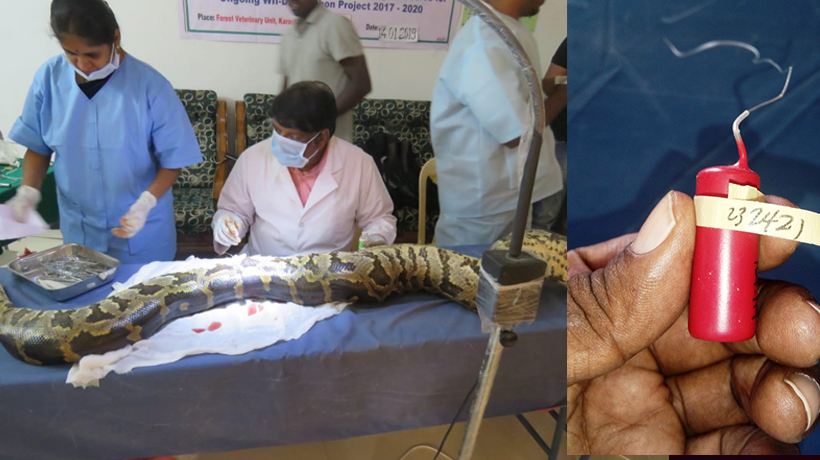Trending Now
- “I will soon make an announcement regarding a statewide tour across Tamil Nadu.” – O. Panneerselvam.
- Vatsala, Asia’s oldest elephant, has passed away at Panna Tiger Reserve; social activists mourn the death of this elephant, which lived for over 100 years.
- “The U.S. Govt earned ₹8 lakh crore this year through increased tariffs on foreign goods.” – U.S President Donald Trump.
- World No.1 Aryna Sabalenka has advanced to the semifinals in the Women’s Singles category at Wimbledon Tennis.
Coimbatore
Unique Study of Pythons With Radio Transmitters in Upper Bhavani
![]() July 9, 2019
July 9, 2019
Dr. K Ashokan’s passion for pythons, has involved him in a unique national study of the reptiles, conducted by Wildlife Institute of India (WII) at Moyar Valley near Upper Bhavani river in Coimbatore.
Being the former director of Coimbatore Zoo, Dr K Ashokan as a veterinary doctor has operated on nearly 50 snakes. Currently, he is the area advisor of Sathyamangalam Forest. The python project under WII involves inserting radio transmitters inside the reptiles’ stomachs through surgery and releasing it back into the forest.
He tells The Covai Post, “I operate and insert the transmitters each weighing 18 grams with a two-year warranty battery. The project head WII’s Dr. Ramesh and his five students catch the pythons from Moyar Valley, a wildlife sanctuary, where python population is more. This kind of study is unique to India, though it is quite popular abroad.”
What is the purpose of the study? “Currently WII has permitted to install 20 pythons with transmitters. This will help us know the python’s breeding, mating patterns, temperature tolerance and life cycle. Currently people know a python’s life span only through zoo data, but there is a lot of difference between zoo and field pythons. The wild pythons will be larger in height, weight and size. The female will weigh 37 kg and be nearly 14 feet in length. The male is leaner and thinner. But I have seen pythons 20 feet long,” says Dr. Ashokan.
Pythons survive in very hot temperatures, and the healthier ones cast their slough nearly 6-10 times in a year, while weaker pythons do not. Pythons are not poisonous though they can swallow a human being alive.
“However, they won’t eat in rainy season, as their bodies are at sub-normal temperatures. At such times you can find them still and lifeless. Even when we trap them with gas anaesthesia for the surgery, we have to constantly monitor their temperature. We retain them for a week before releasing them. A healthy python will lay around 80 eggs of which 70% are be hatched after 18 days,” says Dr. Ashokan.
The surgery is quite delicate, where the reptile’s body is earmarked into four sections and the transmitter is inserted into the abdominal cavity in the third section.
“During my zoo days, I have even operated on tumours in snakes. It is a very interesting subject and I will write a thesis after the project is over,” concluded Dr. Ashokan.























